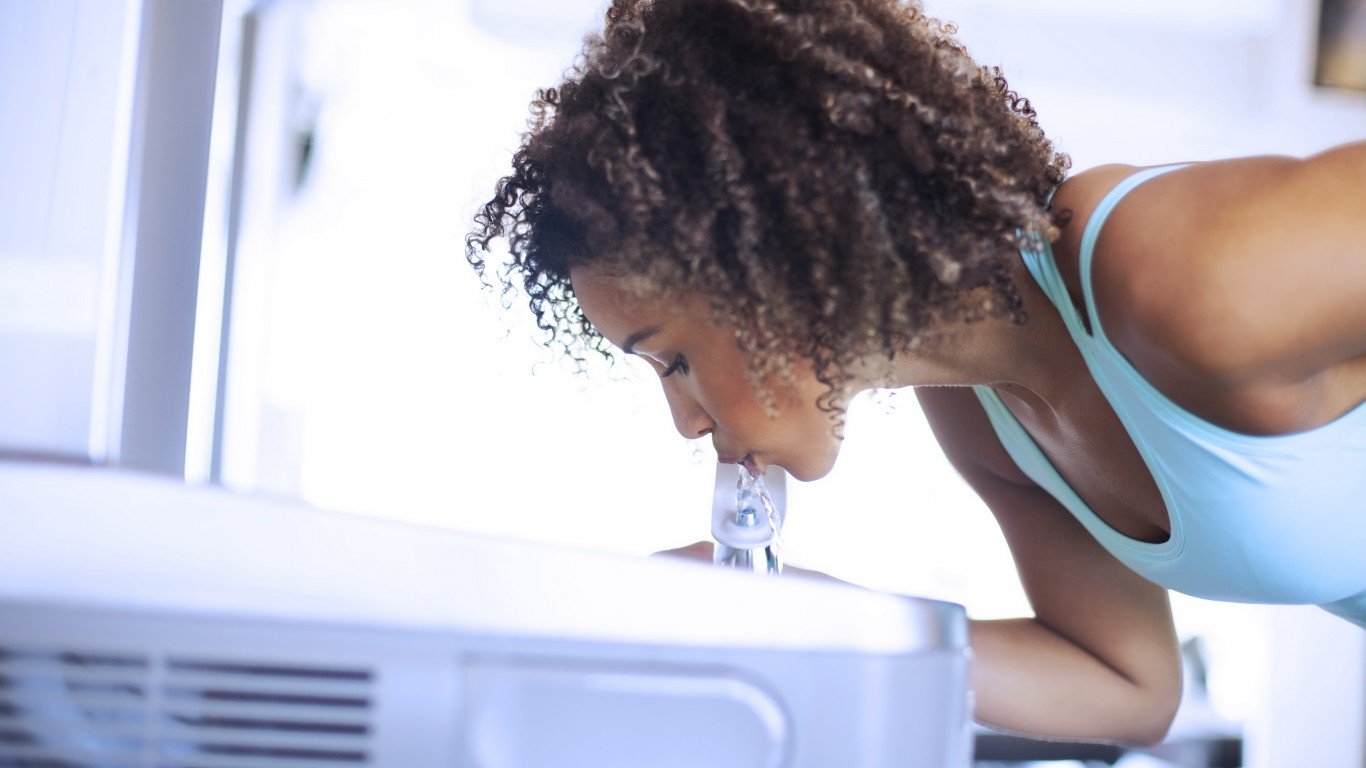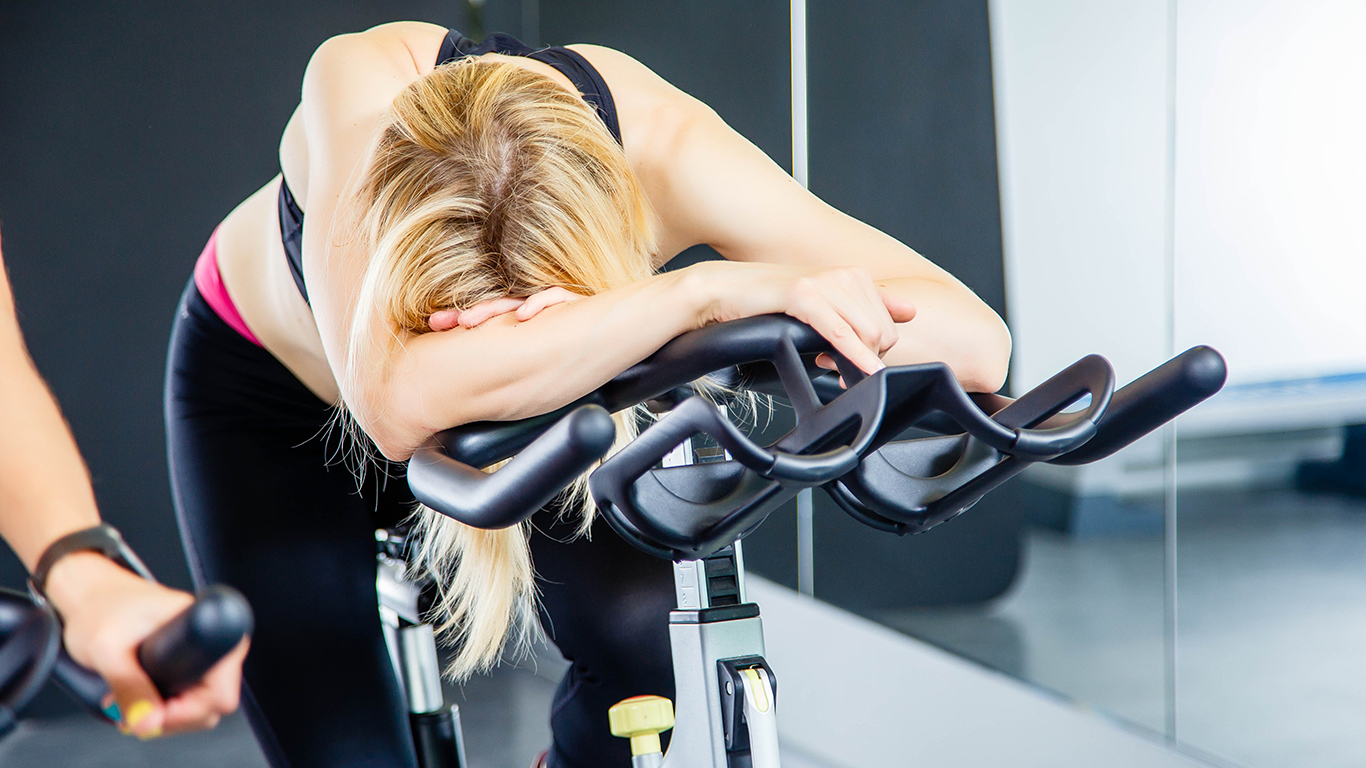Going to the gym deserves admiration. You have taken a step towards becoming healthier, but now you have to be careful not to actually get sick. The sad truth is that gyms can be germ-infested facilities.
No place in the gym is completely safe. Any area — from the locker room to the zone with cardio equipment — is basically a breeding ground for bacteria, with more than 20 categories of harmful pathogens, according to one study that tested four fitness centers in Memphis, Tennessee, for a variety of germs.
Most of the health problems that come from visiting the gym are skin infections, according to Consumer Reports. That’s because the bacteria and fungi that cause the most common skin infections thrive in warm and moist environments — just like those created by the sweat that gets left on exercise equipment and towels.
Most of the germs found in gyms are pathogenic microorganisms that will only cause mild, if any, health problems. After all, millions of people go to the gym every day and they are fine. However, it is possible to catch more serious diseases, including MRSA, an antibacterial-resistant staph infection that kills about 20,000 Americans a year. Take a look at some infections even doctors are afraid of.

1. Yoga mats
Many gyms have signs reminding people to wipe down spinning bikes, treadmills, or weight machines after using them, and most gym users oblige. But this is not the case with yoga mats. They are notorious for spreading germs, viruses, and bacteria. In 2017, David A. Greuner, a vascular surgeon in New York, warned that dirty yoga mats can even carry herpes.

2. Strength-training equipment
If you knew how dirty free weights and weight-lifting machines really were, you would probably skip your strength-training workout. Weights, for example, have 362 times more bacteria than a toilet seat, according to a study by FitRated.com, a fitness equipment review site.

3. Swimming pool
Swimming is a low-impact cardio exercise many people prefer over sweating for an hour on a treadmill or a bike. Most pools are filled with disinfectants like chlorine to clean contaminants like sweat, skin lotion, and urine. But pool waters are still 2.4 times more likely to contain gene-altering agents than tap water, according to a study published in the Environmental Science & Technology Journal. (Hot tubs in spas are four times more mutagenic.)

4. Cardio machine screens and handles
Cardio machines — treadmills, bikes, ellipticals — are among the most used in gyms. For the amount of use they get, it’s not surprising that, by the end of the day, they are also among the dirtiest pieces of equipment at gyms. Liquid spills are inevitable. Add the constant contact with sweaty body parts and you have a long list of germs, some of which may be harmful. The average treadmill has 74 times more bacteria than a public bathroom faucet, according to FitRated.com.
5. Exercise balls
Exercise balls, also called stability, fitness, or medicine balls, are a very popular item at the gym. But they are also rife with germs that can lead to colds and other infections. A 2016 study of gyms in Ohio took 288 samples from various spots in gyms to test for one strain of staph bacteria, S. aureus, which can be resistant to antibiotics. Medicine balls were the most common surfaces to carry it.

6. Water fountains
The safety of the water aside (pipes may be old or poorly maintained), water fountains in gyms may act as transition points for viruses and infections. People may spit in the fountains leaving globs of infectious mucus in the bowl. The rim and the handle are the parts that are touched by hands and thus are most likely to be contaminated.
7. Shower floors
Flip flops are not an ideal match for any feet and some podiatrists have reservations about recommending them. But even flip flops are better than walking barefoot in gyms. The reason is fungus. The fungi that cause common infections such as athlete’s foot and ringworm thrive in warm and moist environments like the floors of gym lockers and showers.

8. Handles at workout stations
It’s natural to grab onto handles of exercise machines at the gym — but you may want to think twice before doing it now. Gym goers regularly wipe their sweat (or noses) with their hands and then put them on the handles. It’s pretty much an unconscious activity. Wearing fingerless gym gloves lowers the risk of contamination, but you’re not completely safe because your fingertips are still exposed.

9. Door handles
Whether you’re going to run on the treadmill or lift weights, everyone who goes to the gym starts out by opening the door, spreading their germs and bacteria to everyone else who touches the handle after them. One University of Arizona study found that viruses on common-use surfaces like door handles can be caught by up to 60% of people who visit the same facility.

10. Gym bags
People commonly leave their workout clothes and gym shoes in their gym bags until it’s time to use them again. This is a big mistake that may cost you a few days of fungal infections. Your shirt, shorts, tights, socks, and sneakers are probably wet from sweating for the last hour or so. Not only will they smell the next day, but they may have grown fungi and other bacteria that love moist and dark places.

11. Gym shoes
The soles of shoes carry a lot of bacteria. The longer you wear a pair without cleaning them, the higher the chance of germs and bacteria, including fecal matter and E. coli. Gym shoes are no exception. Most people don’t change shoes when they get to the gym, bringing everything they picked up on the street with them.

12. Wipe dispensers
Most gyms have dispensers for moist towelettes, encouraging users to wipe down the station or machine they just used so it will be hygienic for the next user. But even that is a potential health hazard as a common use area that dozens of people will touch throughout the day, spreading their germs onto the dispenser and surrounding area.

13. Weight-changing levers
Free weights are filthy, yes, but weight-lifting machines are not much better. People may occasionally wipe the handles and seats, but they often forget about the levers used to change the stack of weights on exercise machines.

14. Water faucets
The sink faucet handles in a gym locker room are the most bacteria-infested surface of all, according to FitRated.com. They carry more than 545,000 colony-forming units (CFU) per square inch. That’s, on average, three times more than any other surface tested. The sink handle in one gym locker room had more than 7 million CFUs.
15. Balance bar in exercise room
The balance bar is a commonly used piece of gym equipment. The good news is that many people use it while already wearing gloves because the grip is better. The bad news is that it’s not cleaned as often as equipment seats. To minimize your chances of catching some of the germs lurking on the bar, clean it before using.

16. Benches
FitRated.com examined the germ content on benches in gym locker rooms, finding that the average bench surface had around 8,000 colony-forming units per square inch. For context, the average toilet seat has 3,200 CFUs. Just under half of the germs found on those benches could potentially be harmful to humans.

17. Soap dispensers
It seems counterintuitive to avoid using something that helps you stay clean, but the soap dispensers in gym locker rooms are dirty. (Have you ever cleaned a soap dispenser?) Every time you hit the top of the dispenser you leave behind whatever bacteria has been on your hands. According to some cleaning experts, that often includes fecal matter.

18. Workout gloves
Workout gloves, in addition to helping people get a better grip on weights, can also help keep germs off your hands. But they only help keep you germ-free if they are washed regularly. Weight-lifting gloves are often made out of polyester — a material that staph bacteria can cling to.



